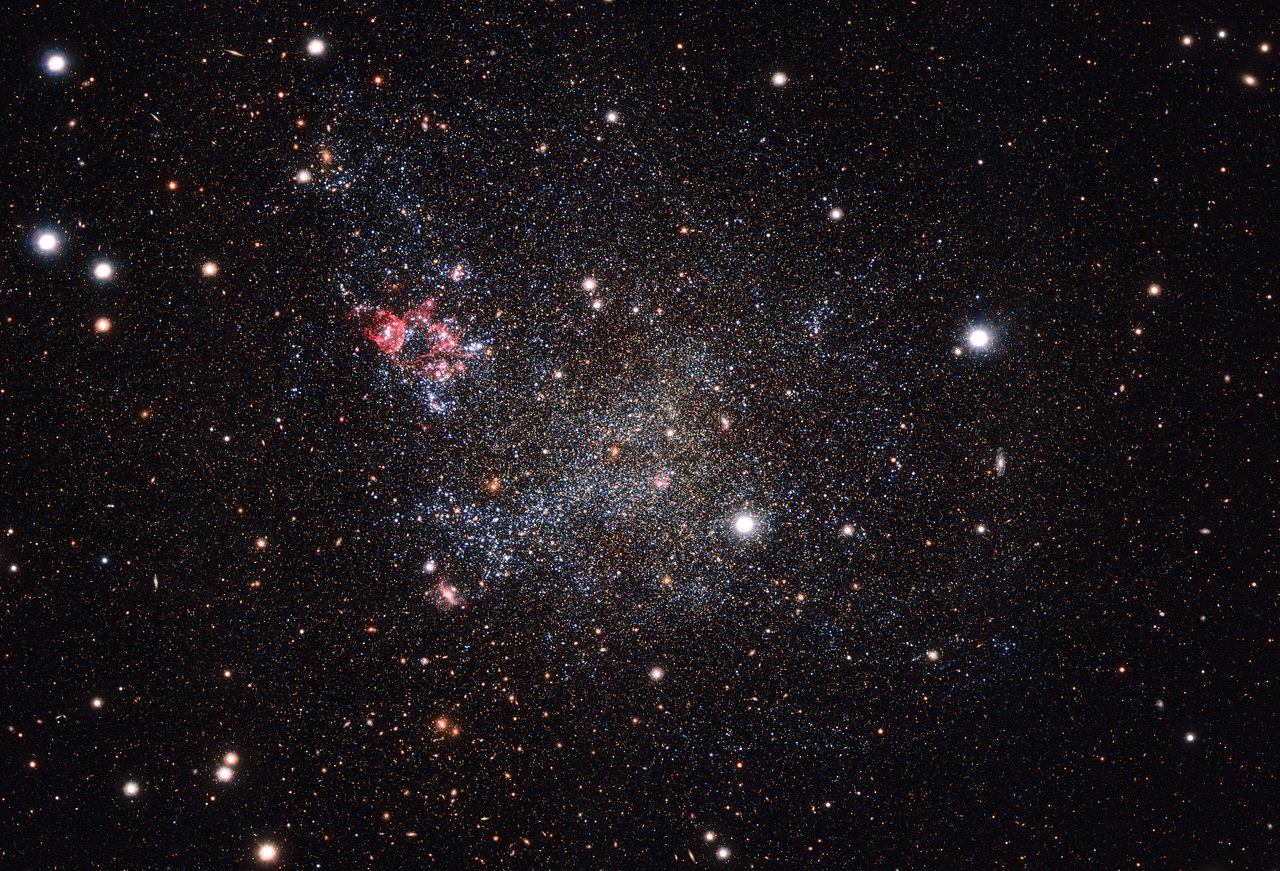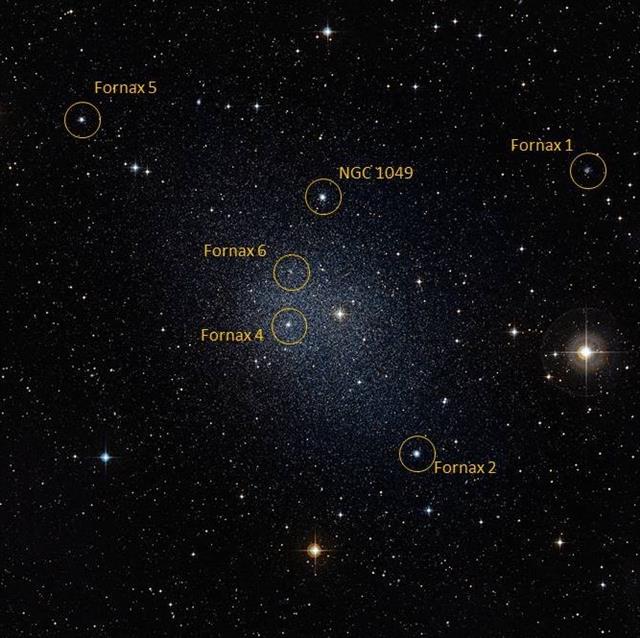I'm very glad to see this APOD, and Martin Pugh and Mark Hanson are two of my favorite astrophotographers!

Also NGC 6822 is very interesting in itself, as a dwarf irregular galaxy. To me, however, NGC 6822 is clearly a tiny
barred dwarf galaxy trying to grow into a tiny spiral galaxy!
"Barred" dwarf galaxy NGC 6822. Photo: Martin Pugh/Mark Hanson.
In my opinion, it's clearly a bar that we see running diagonally from upper left to lower right in NGC 6822, just like the bar (the bright central elongated structure) in NGC 1073.
The main difference between NGC 6822 and NGC 1073 is, of course, that the former galaxy is so flimsy! As you can see, NGC 6822 has no central brightening. This is something it has in common with the Large Magellanic Cloud, another small (but not
extremely dwarfish) barred galaxy.
The Large Magellanic Cloud. Photo: Eckhard Slawik.
Let's look at some differences and similarities of these three galaxies:
1) All are barred.
2) But the bar of NGC 6822 is dominated by blue stars which are probably similar to Regulus and Vega, mid B-type to early A-type stars. The bar of the Large Magellanic Cloud is dominated, I would say, by stars similar to Altair, Procyon and even the Sun: late A-type, F-type and G-type stars. The bar of NGC 1073 is dominated by stars cooler than the Sun, like Pollux. But there is a large patch of bright star formation in the bar of NGC 1073, where hot bright stars are being born.
3) Note, too, that the bluest bar is the faintest and the yellowest bar is the brightest. The blue bar is faintest, because it contains the smallest number of stars, while the yellow bar is brightest, because it contains the largest number of stars. Also, galactic bars are usually yellow in color and crammed full of old stars.
4) All three galaxies display star formation outside the main bar. In NGC 1073, the brightest star formation is probably in the bar. In NGC 6822 and the LMC, most of the star formation is outside the bar.
5) NGC 1073 has a bright center (and a galactic core) in its bar. NGC 6822 and the LMC lack a bright center in their bars.
6) NGC 1073 clearly has spiral arms. The LMC has "the beginnings of" a spiral arm on both sides of its bar. Note the rounded soft arc shape at the left end of the bar, and the extended "fluff" at the right end of the bar.
7) NGC 6822 lacks spiral arms. Note, however, the blue "tail" pointing downwards from the lower right end of the bar of NGC 6822. This might just possibly be the beginning of a spiral arm, although I doubt that it will ever really grow into one.
8) The bright pink emission nebulas at top in the picture of NGC 6822 could be a "counterpart" to the blue tail at the bottom of the image. Both features could be rudiments of spiral arms.
9) In NGC 6822, most of the bright pink emission nebulas probably mark the perimeter of the galaxy's disk. If I am right about that, and if NGC 6822 has a disk in the first place, it would imply that this little galaxy displays some rotation in a preferred direction.
10) Of the three galaxies, NGC 6822 is clearly the flimsiest and least massive. The Large Magellanic Cloud is the "middle child", and NGC 1073 is the most massive of the three. But it is a lot less massive than the Milky Way.
Ann
 NGC 6822: Barnard's Galaxy
NGC 6822: Barnard's Galaxy



